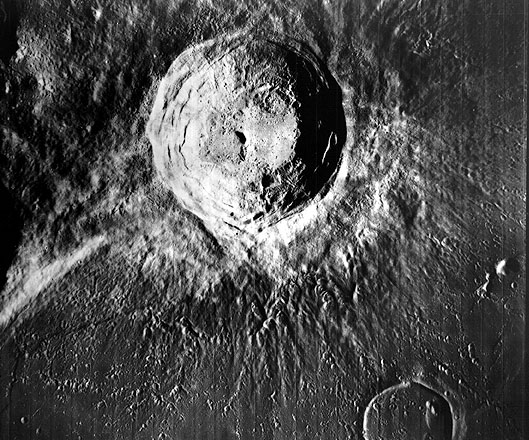August 2, 2015
Another Day, Another Success
Originally published August 1, 2004
Image Credit: Lunar Orbiter V - M197 |
|
Another Day, Another Success The Lunar Orbiter program, which acquired high resolution images of the lunar surface to help identify safe landing sites for Apollo, was the most successful of America's lunar efforts. There were 5 missions and 5 successes - compare with 3 out of 9 for Ranger, 4 out of 5 for Surveyor, and 6 out of 7 for Apollo. The first 3 Orbiters were so successful at getting high resolution images of potential Apollo landing sites that the 4th was reprogrammed to map most of the Moon, and the 5th - launched 37 years ago today - focussed on areas of high geologic interest. And some of the most dramatic images from our first phase (I am an optimist!) of lunar exploration came from Orbiter V. This wonderful medium resolution view of Aristarchus is a good example. The 40 km wide, 4.25 km deep crater is very young, an estimated half billion years old, and is very well preserved. Radial ejecta deposits and secondary craters cover the nearby Oceanus Procellarum and the hapless crater Aristarchus F at the bottom right of the image. On the inner wall at least three down-dropped terraces are visible, and a central peak rises from the flat floor. Clementine multi-spectral imaging showed that parts of the peaks are made of the anorthite - the deep, plagioclase-rich rock that formed in the early Moon's magma ocean. Technical Details: Related Links: Yesterday's LPOD: 40 Years Since Impact Tomorrow's LPOD: Jupiter Graze |
Author & Editor: |
COMMENTS?
Register, Log in, and join in the comments.




